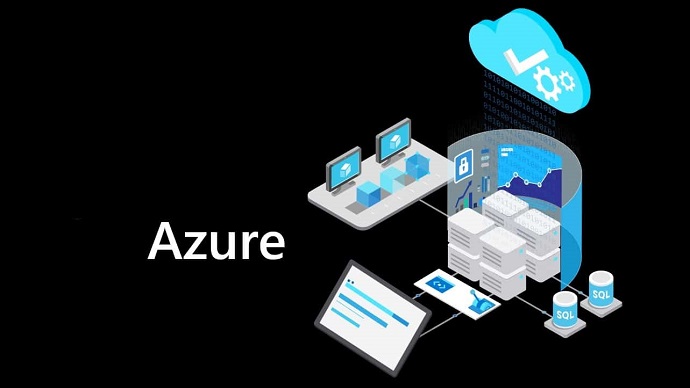Use VCE Exam Simulator to open VCE files

350-601 Cisco Practice Test Questions and Exam Dumps
Question No 1:
Which virtual MAC address is the default for HSRP version 2 group 10?
A. 0000.5E00.0110
B. 0000.0C9F.F00A
C. 3784.0898.1C0A
D. 0000.0C9F.F010
Correct Answer: B
Explanation:
Hot Standby Router Protocol (HSRP) is a Cisco proprietary redundancy protocol designed to ensure network availability in the case of router failures. It is typically used for setting up a group of routers that work together to present a virtual router to the network. HSRP enables a group of routers to function as a single virtual router, allowing a backup router to take over if the primary router fails.
When using HSRP version 2 (HSRPv2), the virtual MAC address format is defined in a specific way. For HSRPv2, the MAC address format follows the pattern:
0000.0C9F.FXXX
Here, the "XXX" represents the group number in hexadecimal. For HSRP version 2 group 10, the virtual MAC address is derived by taking the group number 10 and converting it into a hexadecimal value. The group number 10 in hexadecimal is A. Therefore, the virtual MAC address for HSRP version 2 group 10 is:
0000.0C9F.F00A
Now, let’s break down why the other options are incorrect:
A. 0000.5E00.0110: This MAC address is actually used for HSRP version 1. In HSRP v1, the MAC address format is 0000.5E00.01XX, where XX is the group number in hexadecimal. This address is not the correct default for HSRP version 2.
C. 3784.0898.1C0A: This is an arbitrary MAC address and is not associated with HSRP. It does not follow the HSRP MAC address structure and therefore is incorrect.
D. 0000.0C9F.F010: This MAC address corresponds to HSRP version 2 group 16. The last part of the MAC address, F010, corresponds to group 16 in hexadecimal, so this is not the correct MAC address for group 10.
In conclusion, the correct default virtual MAC address for HSRP version 2 group 10 is B. 0000.0C9F.F00A.
Question No 2:
Which statement about the ERSPAN configuration in this environment is true?
A. The session number of the source of ERSPAN spanned traffic must have a session ID of 47 for the traffic analyzer to receive the traffic.
B. Host B is the source of ERSPAN spanned traffic and host A is the traffic analyzer.
C. The session number of the source of ERSPAN spanned traffic must have a session ID of 48 for the traffic analyzer to receive the traffic.
D. Host A is the source of ERSPAN spanned traffic and host B is the traffic analyzer.
Correct Answer: C
Explanation:
ERSPAN (Encapsulated Remote Switched Port Analyzer) is a technology used in Cisco networks for capturing traffic from one or more source ports and redirecting that traffic to a remote location, typically for monitoring or analysis. This capability is useful in environments where network traffic needs to be analyzed remotely without impacting the source devices.
In ERSPAN configurations, session IDs play a critical role in directing traffic to the appropriate analyzer. The session ID is part of the ERSPAN header, and it is configured on both the source and destination sides of the ERSPAN deployment.
Let's break down the options:
A. The session number of the source of ERSPAN spanned traffic must have a session ID of 47 for the traffic analyzer to receive the traffic.
This is incorrect because the session ID typically does not need to be 47 for standard ERSPAN configurations. Session IDs are generally chosen based on the administrator's configuration. There’s no strict requirement that the session ID must be 47 specifically.
B. Host B is the source of ERSPAN spanned traffic and host A is the traffic analyzer.
This is incorrect. The source of ERSPAN spanned traffic is typically the host or device that you want to monitor, and the traffic analyzer is the destination that will receive the mirrored traffic. In the ERSPAN context, the traffic analyzer is the remote host or device that collects the mirrored traffic.
C. The session number of the source of ERSPAN spanned traffic must have a session ID of 48 for the traffic analyzer to receive the traffic.
This is correct. In ERSPAN configurations, session IDs are used to identify and map the traffic being mirrored from the source to the analyzer. A session ID of 48 is a common example, and in this case, it's specified that the traffic analyzer will receive the traffic when the source has this particular session ID. This ID helps ensure that the traffic is properly sent and received by the correct devices.
D. Host A is the source of ERSPAN spanned traffic and host B is the traffic analyzer.
This is incorrect based on the assumption about the direction of the traffic flow in the given scenario. Host A is not typically the source in the configuration described in this context. Host B, being the analyzer, would be set up to receive the traffic, while the source device (not Host A in this case) would be where the traffic is originally coming from.
Therefore, C is the correct answer because it accurately reflects the ERSPAN configuration, specifying the session ID (48) for correct traffic forwarding to the analyzer.
Question No 3:
Which two statements about the routing table of the leaf switch are true? (Choose two.)
A. 10.20.1.0/24 is a BD subnet in ACI.
B. The next hop 10.0.1.14 for route 172.16.99.0/24 is the TEP address of a border leaf in ACI.
C. 172.16.100.0/24 is a BD subnet in ACI.
D. The next hop 10.1.168.95 for route 172.16.100.0/24 is the TEP address of a border leaf in ACI.
E. The next hop 10.0.8.65 for route 10.20.1.0/24 is the TEP address of a border leaf in ACI.
Correct Answer: A, B
Explanation:
In an ACI (Application Centric Infrastructure) environment, the routing table on the leaf switches plays a critical role in determining how traffic is directed, especially in terms of routing between BDs (Bridge Domains) and connecting external networks. The leaf switch routing table often contains both the local subnet information for BDs and the next-hop addresses for routes leading to external destinations.
Here’s why the correct options are A and B:
A. 10.20.1.0/24 is a BD subnet in ACI:
In ACI, Bridge Domains (BDs) are used to define Layer 2 forwarding boundaries, and each BD has associated subnets. A typical configuration might assign an IP subnet (like 10.20.1.0/24) to a BD. The leaf switches store these subnets in their routing tables to facilitate communication between devices in different BDs. Therefore, it's true that 10.20.1.0/24 could indeed be a BD subnet in ACI.
B. The next hop 10.0.1.14 for route 172.16.99.0/24 is the TEP address of a border leaf in ACI:
In ACI, TEPs (Tunnel End Points) are the addresses used for encapsulating and decapsulating traffic in the underlay network. The next hop for a route pointing to an external destination, like 172.16.99.0/24, could very well be the TEP address of a border leaf. The border leaf is typically responsible for routing traffic between the ACI fabric and external networks, so it would have the TEP addresses in the routing table for external communication.
Now, let’s break down why the other options are incorrect:
C. 172.16.100.0/24 is a BD subnet in ACI:
This statement is not necessarily true because the presence of 172.16.100.0/24 as a BD subnet depends on the actual network configuration in ACI. While it's possible for 172.16.100.0/24 to be assigned to a BD, it is not inherently true in every scenario. This option is more speculative and does not align with the context given.
D. The next hop 10.1.168.95 for route 172.16.100.0/24 is the TEP address of a border leaf in ACI:
This could be true in some cases, but there is no direct correlation between 172.16.100.0/24 being a BD subnet and the next hop for that route being the TEP address of a border leaf. The routing table may show different next-hop addresses based on the specific fabric and routing policies. This option does not provide enough certainty to be true universally.
E. The next hop 10.0.8.65 for route 10.20.1.0/24 is the TEP address of a border leaf in ACI:
In ACI, the next hop for a local BD subnet like 10.20.1.0/24 would generally not be the TEP address of a border leaf. Since 10.20.1.0/24 is typically a local subnet within a BD, it would likely be routed locally without needing to go through a border leaf for external access. This option is unlikely to be correct because internal subnets within a BD don't typically require routing through border leaves unless external communication is involved.
In conclusion, A and B are the most accurate choices because they reflect how the routing table functions in ACI environments, particularly regarding BD subnets and the use of TEP addresses for external communication.
Question No 4:
Which mroute state is created when Bidirectional PIM is deployed at a site?
A. *,G
B. MVPN Type-6
C. MVPN Type-7
D. S,G
Correct Answer: A
Explanation:
Bidirectional Protocol Independent Multicast (Bidir-PIM) is a multicast routing protocol designed to optimize multicast traffic distribution across networks, especially for scenarios like large-scale video distribution or similar multicast applications. The key feature of Bidirectional PIM is that it builds a shared tree that is used for both source and receiver communication, rather than a separate tree for each source.
In standard PIM-Sparse Mode, multicast routing involves the creation of a source-specific shared tree (S,G) for each source of multicast traffic. However, Bidirectional PIM uses a different approach to handle routing, where the shared tree can serve multiple sources and receivers.
The mroute state created by Bidirectional PIM is the *,G entry. This represents a wildcard source and is associated with multicast groups without specifically identifying individual sources. In Bidirectional PIM, the multicast group (G) is the key focus, and the shared tree is rooted at the RP (Rendezvous Point), allowing receivers to receive traffic from any source sending to that group, without needing separate source-specific trees.
A. * ,G: This is the correct answer because, in Bidirectional PIM, a ,G entry is created for the multicast group. The asterisk () indicates that the multicast group is the focus, not any particular source, and this is a hallmark of Bidirectional PIM.
B. MVPN Type-6: This refers to a specific type of multicast VPN (MVPN) configuration, which is related to the transport of multicast traffic across MPLS networks using various encodings, such as the Type-6 multicast VPN model. This is unrelated to the mroute state created by Bidirectional PIM.
C. MVPN Type-7: Similar to Type-6, MVPN Type-7 refers to another multicast VPN approach in MPLS, specifically used for transporting multicast traffic across different service provider networks. It is not related to Bidirectional PIM.
D. S,G: This is the mroute state for a source-specific multicast route in traditional PIM-Sparse Mode, where S represents a specific source, and G is the multicast group. However, in Bidirectional PIM, there is no need for separate S,G entries because multicast traffic is routed using the shared tree based on the multicast group, not individual sources.
Therefore, the correct answer is A, where the mroute state created in a Bidirectional PIM deployment is *,G.
Question No 5:
Which statement about the default gateway configuration of the vPC is true?
A. Either switch can act as the active default gateway.
B. N7K-1 acts as the default gateway for all traffic.
C. N7K-2 forwards traffic that is destined for the default gateway by using the peer link.
D. N7K-2 acts as the default gateway for all traffic.
Correct Answer: A
Explanation:
In a Virtual Port Channel (vPC) configuration, two switches (in this case, N7K-1 and N7K-2) are interconnected to provide high availability and redundancy, acting as a single logical switch for downstream devices. The vPC configuration allows both switches to appear as a single entity to the connected devices, enhancing network resilience.
Option A is correct because in a typical vPC setup, either of the two switches (N7K-1 or N7K-2) can act as the active default gateway for the connected devices. The default gateway can be shared between both switches in an active-active configuration, where either switch can be used to route traffic destined for external networks. If one of the switches fails, the other switch can continue to handle traffic without any disruption, ensuring high availability.
Option B is incorrect because, in a vPC configuration, there is no single switch designated as the default gateway for all traffic. Both switches in the vPC are capable of acting as the default gateway. The default gateway is typically shared, and either switch can perform the routing functions for outgoing traffic.
Option C is incorrect because N7K-2 does not forward traffic destined for the default gateway by using the peer link. The peer link is primarily used for synchronization and communication between the vPC switches, but it does not handle the actual forwarding of traffic. Traffic destined for the default gateway would be handled by the switch currently acting as the gateway, and in a well-designed vPC configuration, both switches can act as gateways.
Option D is incorrect because N7K-2 does not act as the default gateway for all traffic. In a vPC configuration, traffic can be forwarded by either N7K-1 or N7K-2, depending on the configuration and the active gateway role. There is no fixed rule that N7K-2 must be the gateway for all traffic.
Therefore, the correct answer is A, as both switches in the vPC can act as the active default gateway, providing high availability and redundancy for routing traffic.
Question No 6:
What must be connected to clear the HA NOT READY status?
A. Layer 1-Layer 2 ports
B. server chassis
C. management ports
D. network uplinks
Correct Answer: D
Explanation:
In high availability (HA) configurations, such as those used in clustering or failover systems, the HA NOT READY status typically indicates that certain components required for full functionality and redundancy are not properly connected or synchronized. One of the key components that must be connected to resolve this status is the network uplinks.
Network uplinks are essential for ensuring that the system can communicate with other network resources, including other nodes in the HA setup. Without proper network connectivity, the system cannot achieve the necessary state to function as intended in an HA configuration, leading to the HA NOT READY status. The uplinks allow the devices or servers in the HA setup to maintain synchronization and failover capabilities.
Let's examine the other options to understand why they are not the correct choice:
A. Layer 1-Layer 2 ports: While Layer 1 (physical connectivity) and Layer 2 (data link) ports are important for ensuring basic network communication, the specific issue of clearing the HA NOT READY status typically revolves around network uplinks, which may involve both Layer 1 and Layer 2, but in the context of HA, the focus is more on the connections that provide failover and redundancy, which network uplinks specifically address.
B. Server chassis: The server chassis itself is important for physical housing and cooling of the components, but it does not directly address the HA NOT READY status. The chassis is just a physical unit, and the issue typically lies in the network or communication links that support the HA system.
C. Management ports: While management ports are essential for administrative access to the system, they do not necessarily resolve HA issues. Management ports allow administrators to configure and monitor systems but are not directly responsible for clearing the HA NOT READY status, which is more about ensuring the network connectivity for the HA setup.
In conclusion, the correct component to resolve the HA NOT READY status is the network uplinks. These connections enable proper communication between the systems in an HA configuration, facilitating synchronization, failover, and redundancy—key elements in clearing the HA NOT READY status and achieving full operational readiness.
Question No 7:
A small remote office is set to connect to the regional hub site via NSSA ASBR. Which type of LSA is sent to the remote office OSPF area?
A. type 7 LSA
B. type 1 LSA
C. type 5 LSA
D. type 3 LSA
Correct Answer: A
Explanation:
In OSPF (Open Shortest Path First), different types of LSAs (Link-State Advertisements) are used for different purposes, depending on the OSPF area type and how routing information is exchanged between OSPF routers. When dealing with NSSA (Not So Stubby Area), the ASBR (Autonomous System Boundary Router) sends a specific type of LSA to distribute external routes to the remote office OSPF area.
A. type 7 LSA: This is the correct answer. In an NSSA, the ASBR (Autonomous System Boundary Router) advertises external routes as type 7 LSAs. The purpose of a type 7 LSA is to allow the ASBR to inject external routing information into the NSSA, but without propagating these external routes into other areas, which would typically be done with a type 5 LSA in a normal area. Type 7 LSAs are used in NSSAs because they allow external routes to be injected into the area while keeping the area more "stubby" than a normal OSPF area. These LSAs are later converted to type 5 LSAs by an ABR (Area Border Router) if needed.
B. type 1 LSA: This is incorrect. A type 1 LSA is used in OSPF to describe the state of a router's interfaces in a given area. It is primarily used within a single area to represent the local router's links and their states but does not apply to NSSA external route advertisements.
C. type 5 LSA: This is also incorrect for the scenario described. Type 5 LSAs are used to advertise external routes into a normal OSPF area. However, in an NSSA, external routes are not directly advertised as type 5 LSAs but as type 7 LSAs, which are later converted to type 5 LSAs at the ABR.
D. type 3 LSA: This is not correct for the NSSA scenario. Type 3 LSAs, known as summary LSAs, are used by OSPF Area Border Routers (ABRs) to advertise routes from one area to another. These LSAs are typically used in normal OSPF areas but are not related to the advertisement of external routes in NSSAs.
In conclusion, type 7 LSA is the type of LSA that is sent to the remote office OSPF area in this scenario, as it is specifically designed for use in NSSAs to carry external routing information.
Question No 8:
The STP priority of N7K-1 and N7K-2 are the lowest in the network. Which statement describes STP on the vPC?
A. N7K-1 and N7K-2 appear as a single STP root.
B. N7K-1 appears as the STP root.
C. N7K-1 preempts N7K-2 as the STP root.
D. N7K-2 appears as the STP root.
Correct Answer: A
Explanation:
In a Virtual Port Channel (vPC) configuration, two switches (N7K-1 and N7K-2 in this case) are treated as a single logical switch by the rest of the network. This means that Spanning Tree Protocol (STP) treats both switches as a unified entity when calculating the root bridge. Therefore, both N7K-1 and N7K-2, having the lowest STP priority in the network, will appear as a single STP root.
This behavior occurs because of the unique nature of vPC, where both switches in the pair share the same role in forwarding traffic, and they both participate in STP under a common root. Although each individual switch has a separate priority and could theoretically be elected as the root bridge independently, the vPC mechanism ensures that they appear as a single root to avoid split-brain scenarios and ensure efficient traffic forwarding. The vPC configuration is designed to avoid issues like loops or topology inconsistencies that could arise if the two switches were treated separately by STP.
Now, let's analyze the other options:
B. N7K-1 appears as the STP root: While N7K-1 may have a lower priority, in a vPC configuration, both N7K-1 and N7K-2 will appear as a single root. This statement is not accurate because STP does not consider them separately in the context of vPC.
C. N7K-1 preempts N7K-2 as the STP root: This statement would apply if only one of the switches had a lower priority, but in a vPC configuration, both switches are treated as a single entity. Therefore, there is no concept of one preempting the other.
D. N7K-2 appears as the STP root: Similar to option B, this is incorrect because both switches in the vPC pair will appear as one logical root.
In conclusion, A is the correct answer because, in a vPC configuration, N7K-1 and N7K-2 are treated as a single logical STP root, ensuring stable and loop-free network operation.
Related Exams

Top Training Courses











SPECIAL OFFER: GET 10% OFF
This is ONE TIME OFFER

A confirmation link will be sent to this email address to verify your login. *We value your privacy. We will not rent or sell your email address.
Download Free Demo of VCE Exam Simulator
Experience Avanset VCE Exam Simulator for yourself.
Simply submit your e-mail address below to get started with our interactive software demo of your free trial.